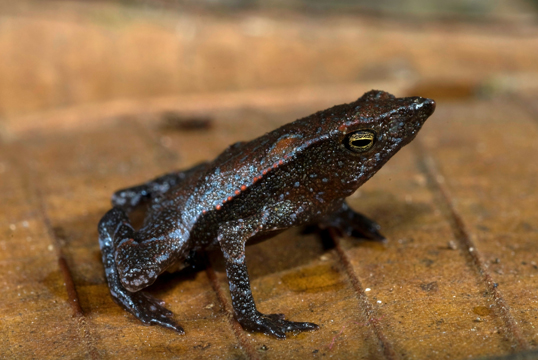Amphibians in Decline Fund 2011 | |
| Total Funds Distributed Through Grants | $702,033 |
| Total Partner Contributions Leveraged by Grants | $1,267,104 |
| Average Grant Size | $27,000 |
| Total Number of Countries that Received Program Support | 13 |
In the last five years,there has been a drastic decline in the number of amphibians around the world. Currently, there are about 6,771 identified species of amphibians that exist around the world. This may seem like a large number, however, most of these creatures live in small, concentrated populations with scarce resources. As a result, an overwhelming number of these amphibians are in desperate need of conservation strategies in order to prevent any chances of extinction. Amphibians In Decline is the only dedicated fund to protects frogs, toads, salamanders, newts, and caecilians in the federal government.
In the Central American cloud forests, for example, Harlequin frogs are mysteriously disappearing from their habitat. Such is also the case for toads and salamanders in Colombia and Western India, and the underground Caecilian, a species found in West and Eastern Africa, which are often mistaken for snakes or earthworms. Without thorough investigation and immediate conservation action, these rare species may be completely wiped off the face of the earth within a few years.

Credit: Don R Church/Global Wildlife Conservation
It is for this reason that the US Fish and Wildlife Service has created the Amphibians in Decline program, an initiative put in place to provide support to foreign countries to conserve these highly endangered amphibian species. The goal of this program is to to support research and investigative efforts in order to identify and implement effective and comprehensive strategies for the conservation of amphibians in their natural habitats. To date, the Amphibians in Decline Fund has successfully supported conservation efforts to protect the Chinese great salamander, Cameroon’s caecilian, and the Panamanian golden frog, among others. This acts as a catalyst to leverage funding from other sources for these projects.
From 2010-2012, the Wildlife Without Borders - Amphibians In Decline Fund has awarded approximately $702,033 for the conservation of highly threatened amphibians, which were leveraged with $1,267,104 in matching funds including:
- U.S.: In 2011, the USFWS helped support Dr. Vance Vrendenburg (San Francisco State University, Dr. Jacob Kerby (University of South Dakota), and Dr. Brian Gratwicke (Smithsonian institution) to find an effective treatment for Bathrachochytrium dendrobatidis (Bd), a chytrid fungus that causes the disease chytridiomycosis, which is responsible for the death of many amphibians around the world.
- Panama and Costa Rica: Supporting Dr. Gratwicke (Smithsonian Institution) and Dr. Jacob Kerby to search for skin microbes that increase amphibian resistance to the fungal pathogen responsible for chytrid.
- India: In partnership with the Wildlife Information Liaison Development Society and Zoo Outreach Organization, the USFWS is supporting efforts to survey the occurrence of chytrid in the Western Ghats, a species hotspot for amphibians in India.
- Bolivia: The USFWS is supporting the Museo de Historia Natural Alcide d’Orbigny in implementing the Bolivian Amphibian Initiative to survey some of the country’s most endangered amphibian species for the presence of the deadly fungus, chytrid.
- Madagascar: Illegal gold mining is destroying the breeding ponds of the golden mantilla frog in Madagascar. To combat this threat, the USFWS is supporting a local NGO, Madagaskira Voakajy, to establish a village-based conservation organization that will restore and guard golden mantilla frog breeding sites.
- South Africa: In partnership with, CapeNature, the USFWS is helping to protect the Rough Moss Frog through the management of invasive pine tree species that increases the risk of catastrophic fire to the ecosystem.
- Kenya: USFWS is supporting the National Museums of Kenya working with local farmers to plant trees and maintain suitable cropland for the Sagella caecilian, a subterranean amphibian that occurs in less than five square miles of habitat.
Percentages of activities supported by Amphibian In Decline Fund grants:
- Disease and invasive species: 58%
- Habitat loss caused by agriculture: 31%
- Pollution: 19%
- Habitat loss caused by residential and commercial development: 12%
- Harvest: 8%
- Mining: 4%
Percentages of conservation actions supported through USFWS grants:
- Species management: 100%
- Education and awareness campaigns:81%
- Land management: 23%
- Formal protection policy: 4%
- Economic incentives: 4%





